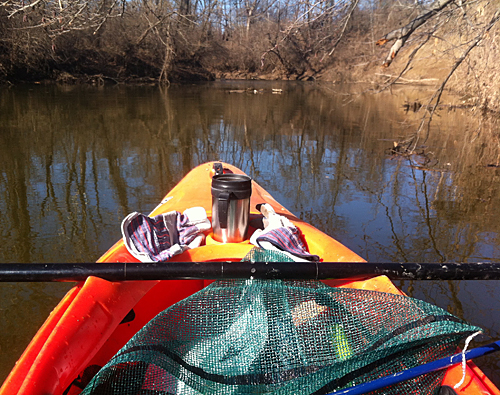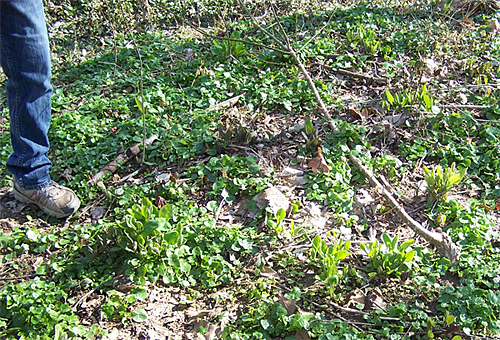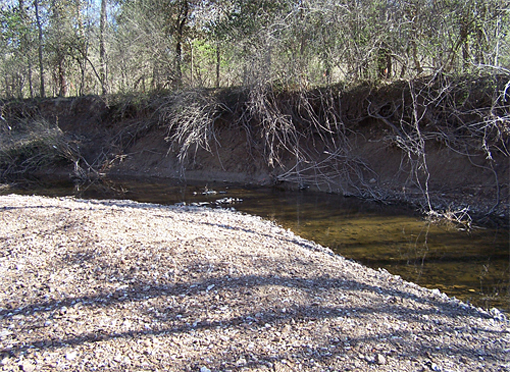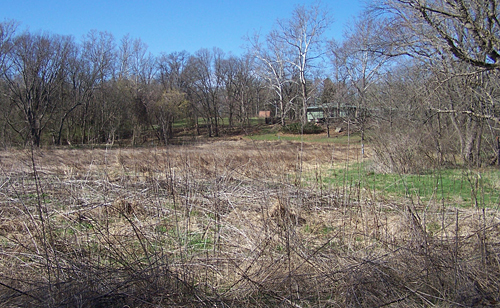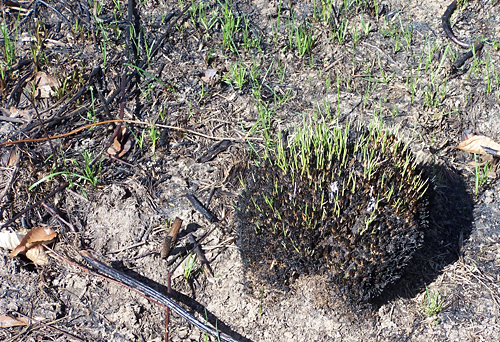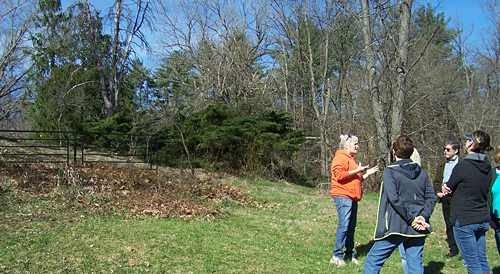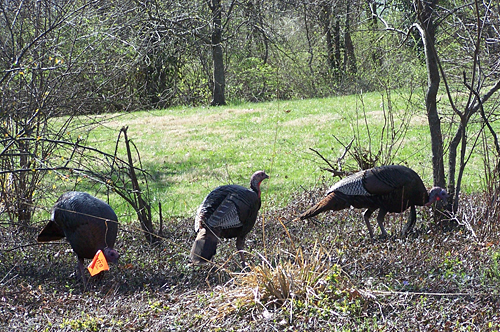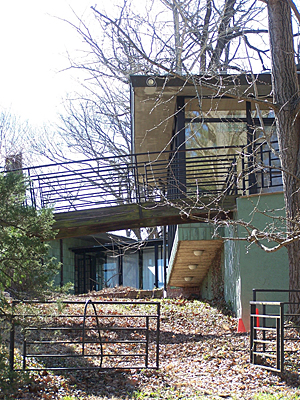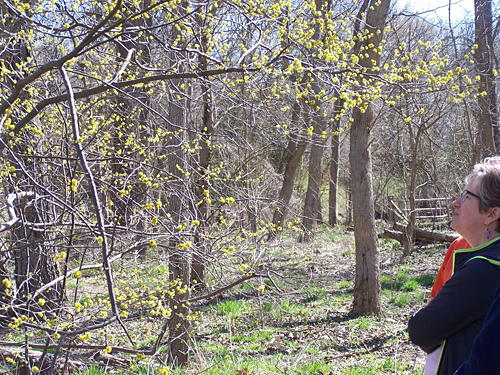How to Grow Potatoes
by Carolyn Hasenfratz
Now is the right time for planting seed potatoes in the St. Louis area. My boyfriend is starting some in his yard and I’ve decided to try growing potatoes in containers on my deck since I’m not allowed to grow vegetables in the ground where I live. I’ve helped a client to do this before with good results but it’s been awhile so I did a little research to refresh my memory and worked out the following procedures.
First acquire some seed potatoes. These are whole potatoes with buds on them that will grow into new plants. If you are not going to plant right away store your seed potatoes in the refrigerator. Cut them into pieces with 2-3 eye buds on each. Let the pieces dry 2-3 days before planting. Small seed potatoes that are 1 to 1 1/2 inches in diameter can be planted whole.
Planting in the ground
The planting method I’m going to describe here mostly comes from an article called “Growing Potatoes in Mulch” and it sounds easy and fun. There are other methods you can try if this doesn’t appeal to you.
1. Pick a sunny spot. Some growers say that a 1/2 day of sun is ok. Choose a spot that has not been recently occupied by another member of the Nightshade family (Eggplant, Pepper or Tomato) within the last three years.
2. Scratch rows slightly into the earth with a hoe, 12-15 inches apart.
3. Place seed potato pieces in rows, cut side down, separated by about one foot.
4. Cover entire bed with 6-8 inches of mulch.
5. Add companion plants if using at the appropriate planting times. See the “Pest Prevention” section below for companion plant suggestions.
6. If any potato tubers look like they are going to break the mulch surface and be exposed to sun, pile more mulch around the plants.
7. Next year put the potato patch in a different area to deter pests.
Planting in a container
All the instructions I read online or in books about growing potatoes refer to really big containers, much larger than I have space for. I don’t know if I’ll have success with my smaller containers but I’m going to try it and see what happens.
1. Choose a large container with excellent drainage. Drill extra drainage holes if you need to. A barrel or trash can is not too large.
2. Set container in a sunny spot.
3. Fill container 1/2 full of potting soil.
4. As potato plants grow above the soil, periodically add more soil (or mulch if you want to try the mulch method) so that some of the leaves are left exposed but lower ones are covered. Don’t let any potatoes get exposed to sun. Eventually the soil may reach the top of the container as the plants grow.
Building a Potato Tower
I heard about this technique on a gardening podcast (I’m sorry, I can’t remember which one!) and it also sounds easy and fun!
1. Build a large cylinder in a sunny spot out of chicken wire or some other mesh product. Fasten together with zip ties.
2. Place about 6″ of straw in the bottom of the cylinder. Start to build layers by putting soil and compost in the middle with a layer of straw around the sides with your potato buds near the edge facing outward. They will grow out of the sides like a strawberry planter.
3. Continue to build layers until tower is full, with an extra few bud pieces on top.
4. When potatoes are ready to harvest, cut the zip ties and let the potatoes and soil fall out. A lot easier than digging! Add the used soil and straw to your compost pile.
Watering
If the weather is dry, give your potatoes 1 – 1/2″ of water per week. Increase to 2″ per week if it’s really hot.
Fertilizing
In the ground, when the sprouts are about 4″ high, apply a balanced fertilizer. If the soil under your potatoes is already fertile that is a big help.
In containers, if you use commercial potting mix there may be fertilizer in it already. If not, add compost and organic fertilizer each time you plant. Switch to a liquid fertilizer when roots have begun to fill the container.
I read a myriad of opinions on exactly what kind of fertilizers to use with potatoes or how often to apply. One thing everyone agrees on is that potatoes are heavy feeders.
Conventional Fertilizers
Apply 5-10-10 or 5-10-5 according to directions on the package.
Organic Fertilizers
Organic fertilizer is a little harder to figure out. I’ve been gardening organically for 12 years and feeding the soil is something I do all the time whenever I have organic matter available to add. I’ve mainly been growing herbs and wildflowers, many of which don’t even want fertilizer so until now it hasn’t been a major consideration for me. I rely a lot on “used” water from cleaning my aquariums and trench composting. Potatoes are something you will have to fertilize, however. Compost is valuable but probably will not be sufficient by itself. With organic fertilizers you won’t do harm by adding too much, but you could be wasting money if you add more than you really need. Cost is not a big consideration for the small containers I’m going to be using so I’m just going to make sure I add a quantity of organic fertilizer that is balanced and let the plants below my deck where the containers are take up the excess if they want it. You can always add Nitrogen because it doesn’t stay in the soil long. A soil test will tell you if you need Potassium and Phosphorus or other nutrients. There are a lot of factors to consider when choosing organic fertilizers, for example bulk, cost, transport and availability. It will be a more involved decision than just choosing a bag with the right numbers so I recommend that as a start you consult this article.
Pest Prevention
Colorado Potato Beetles and Flea Beetles are the most common pests on potatoes in Missouri. The former may be repelled by companion plantings of Catmint, Catnip, Cilantro, Horseradish, Marigold, Nasturtium, Onion, Sage and Tansy. The latter may be repelled by Catmint, Catnip, Mint, Southernwood and Tansy. Try planting some of these plants around your potatoes or make a tea out of the plant parts to spray on your plants.
Periodically inspect the underside of the leaves to see if there are any eggs – if you see some, stick some duct tape on the eggs and pull them off. Ground Beetles are predators on Colorado Potato Beetle larvae. They can be encouraged in your garden with shelter in the form of perennial plants, mulch, rocks and logs. Predatory wasps eat beetle larvae so if you can possibly co-exist with them in your garden they can be great helpers for you.
Harvesting
Feel in the dirt to see how big the potatoes are and take them whenever they are big enough for your needs, or wait until the tops have turned yellow. If you know what variety you have, you should be able to look up how long it takes to be ready for harvest. If you’re not sure, in the St. Louis area start checking for size around July 4.
If you want to do further reading here are the web sites and books I consulted for the information in this article:
Web sites:
Growing Potatoes in Mulch
When and How to Plant Potatoes
Beneficial Insects in the Garden – My own page
Books:
Container Gardening by Sunset.
Guide to Growing Your Own Food by Mother Earth News.
